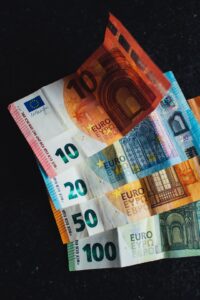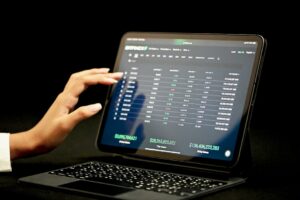When it comes to forex trading, understanding spreads and their significance is crucial. A spread is the difference between the bid and ask price of a currency pair, and it plays a vital role in determining the overall cost of a trade. In this article, we will delve into the concept of spreads, how to calculate them, and why they matter in forex trading.
To begin, let’s understand the bid and ask price. The bid price is the price at which buyers are willing to purchase a currency pair, whereas the ask price is the price at which sellers are willing to sell. The spread is the numerical difference between these two prices and is typically measured in pips, which is the smallest unit of measurement in forex.
Calculating the spread is relatively simple. You subtract the bid price from the ask price, and the resulting number represents the spread. For example, if the bid price for EUR/USD is 1.2000 and the ask price is 1.2003, the spread is 3 pips (1.2003 – 1.2000).
Spreads can vary depending on multiple factors, such as the liquidity of the market, the volatility of the currency pair, and the broker you are trading with. Liquidity refers to the ease with which a particular currency pair can be bought or sold in the market. Highly liquid pairs, such as EUR/USD, tend to have lower spreads compared to less liquid pairs.
Volatility, on the other hand, refers to the price fluctuations of a currency pair. Higher volatility can lead to wider spreads as market participants demand a higher premium for trading in a more unpredictable environment. Moreover, different brokers may offer different spreads due to their business models and the technology they employ.
Understanding the significance of spreads is essential for forex traders. The spread directly affects the profitability of a trade. When you enter a trade, you start with a slight negative balance due to the spread. This means that the market needs to move favorably in your direction by at least the spread amount for you to break even.
For example, let’s say you decide to buy EUR/USD at 1.2003. If the spread is 3 pips, the market needs to move in your favor by at least 3 pips for you to cover the spread and start making a profit. This highlights the importance of selecting a broker with competitive spreads, as wider spreads can eat into your potential profits.
Moreover, spreads also impact the cost of frequent trading. If you are an active trader who frequently enters and exits positions, wider spreads can significantly increase your transaction costs. This is especially relevant for day traders and scalpers who aim to profit from short-term price movements.
In addition, spreads can also indicate market conditions and provide insights into the overall health of the forex market. During times of high market volatility, spreads tend to widen as market participants become more cautious and demand higher compensation for taking on risk. Conversely, in periods of low volatility, spreads tend to narrow as market participants are more willing to transact at smaller price differentials.
To conclude, understanding spreads and their calculation is vital for forex traders. Spreads directly impact the cost of trading and can significantly impact profitability, especially for active traders. Selecting a broker with competitive spreads is crucial for optimizing trading costs. Additionally, spreads can provide valuable insights into market conditions and overall market health. By mastering the concept of spreads, traders can navigate the forex market more effectively and make informed trading decisions.






